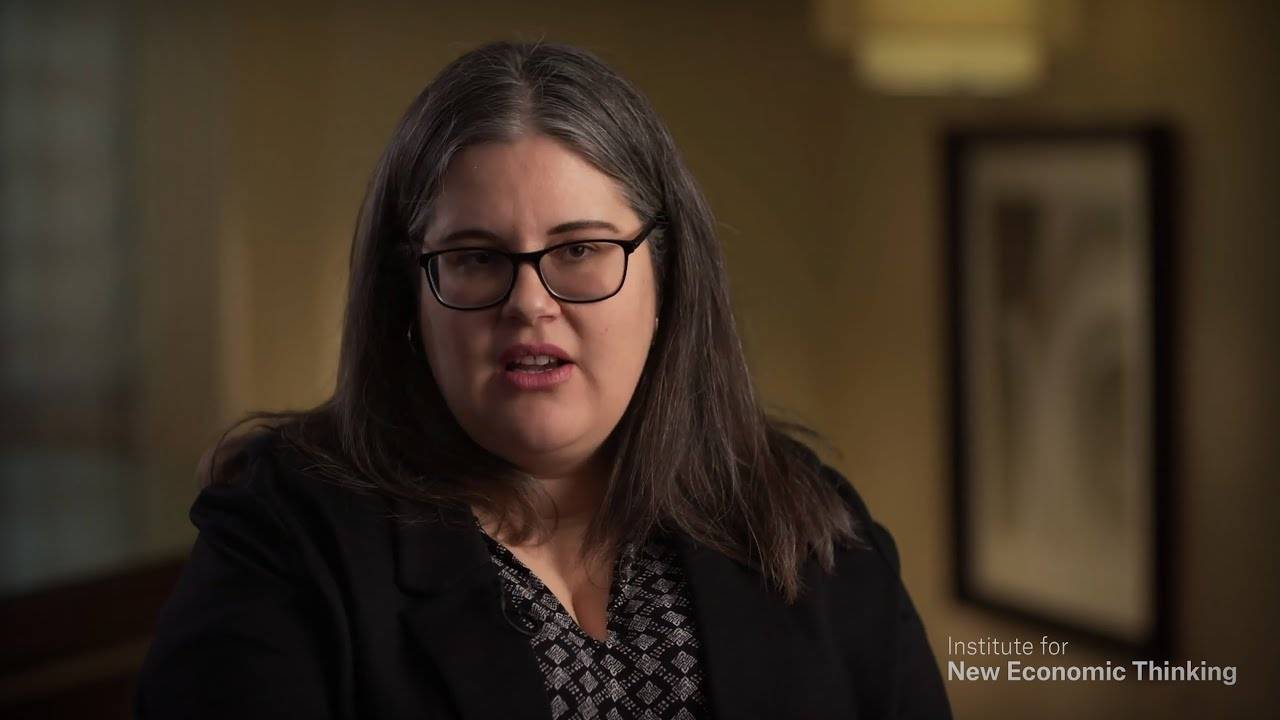– We have a particular time where we have, as an example, rise in the battle on drugs, right, as well as we have adjustments in terms of criminal
justice, right, taking place. As economic experts, we'' re also recognizing that there'' s this entire other
literature, right, around that'' s additionally looking
at inequality enhancing over this very same period. As well as while there'' s a whole lot of literature that informs us that there are economic effects of incarcerations, we recognize that incarcerated people are mosting likely to have minimal task potential customers. They'' re gon na have less wide range accumulation.They ' re gon na have greater likelihoods of repeat imprisonment etc. There ' s less literature'that ' s. thinking about inequality as a potential economic. correlate to incarceration. My name is Anita Alves Pena. I ' m a Professor of Business Economics at Colorado State.
University in Ft Collins. I examine labor markets and also crossways with points like.
immigration, with inequality. In my recent work, with.
my coworker Luke Petach, that'' s at Belmont College, we take an appearance at imprisonment prices and also exactly how they'' ve raised so significantly within the United States gradually. So if you look back.
from 1970 to concerning 2010, you'' ll notification that incarceration prices really move from about.
100 individuals per 100,000 to regarding 500 people per 100,000, therefore this is a substantial distinction, right.This is a substantial difference. that we see in time, and also if you go further back in history and look at imprisonment from 1880 up until the time duration where we start looking at. this in more detail, in 1970, we never see those year-by-year. incarceration prices rising above 150 individuals per 100,000. So this mass incarceration is truly an extra recent. sensations in the United States where we see these really
huge. numbers, and also so, in our work, we ' re taking into consideration just how. that might interrelate with what ' s occurring in regards to regional labor market inequality. We check out, to the local degree, we take a look at travelling zones to consider kinda collections. of regions that collaborate that compose various travelling patterns, and also we have a look at those in order to take into consideration neighborhood markets, a reduced geographical scale, and see exactly how this could be. connecting to mass incarcerations.In terms of the accumulation fads, we understand that inequality. has actually been raising over the very same period, and so we kinda came to. this from a go back.
We ' re considering those. 2 patterns with each other, and after that thinking
about. how this varies spatially as well as exactly how it likewise varies.
Across race and also ethnic background in the United States. Stratification Economics.
truly comes into play where we think of. privilege and we think of just how there may be. different group characteristics and group identity characteristics. that differ for subpopulations. And also to the degree that we see that there ' s still this pattern, and also we do see that there ' s. still this pattern. We additionally attempt to rule out some other empirical'tales as well, but we see that there'' s. various relationships for those that are in different. And Also so Stratification Economics.
is really an arising area that ' s entering into play in regards to considering. how those team identities may result in totally various'dynamics for different subpopulations.
Component of the tale is. most definitely crime, right, however if we take criminal. activity, and we manage for it, we still see that there
' s this increase and considerable boost.
When we assume of this, and. in a historic context as well as just how crime has altered, it ' s actually an out of proportion phenomena that we ' re seeing below. with mass incarceration.And so'we might state that. that ' s part of the tale, but it ' s absolutely not every one of the story.
And also it ' s definitely not driving. one of the most current dynamics to the level that you would certainly anticipate, if that was the only point.
We took a look at both. And so for inequality, we.
looked at the Gini coefficient, as well as
the Gini coefficient is a standard analytical. procedure of inequality.
As the Gini increases, we. have an increasing number of inequality
, that ' s exactly how we reviewed the measure.And so what we discovered was, if we were to increase.

the Gini by one factor on the Gini range, which.
ranges from absolutely no to 100, if we ' re raising by one
. factor in a neighborhood labor market, we'' re seeing regarding 60
. a lot more incarcerated persons in that neighborhood community.
And so that ' s a large number, it ' s a huge number when'you assume of it in contrast to, for instance, the mean, that'' s much more than a 10% rise,'therefore it ' s rather significant. Along with looking.
at the Gini coefficient, we additionally took a look at these.
relative destitution actions where we wanted to explore that stratification financial.
tale right into some more information. And also so for that, we'' re considering areas of the nation where we have high White destitution.
versus non-White hardship. Therefore we took a proportion of the 2, we took a proportion of the White hardship rate to the non-White destitution rate.And as this destitution rate,. this relative destitution price, then enhances by 1%, we ' re searching for that in terms of incarceration.
at the regional level, we'' re having a boost of 73, 75 persons per 100,000. Which'' s big also, right, particularly when you compare.
it to what we were seeing when we'' re also looking.
at the other procedure. When we think of.
Stratification Economics, we'' re considering both departments in regards to points like race.
and ethnic background as well as demographics. We'' re also thinking of.
stratifying by other characteristics, financial dynamics, thinking regarding reduced revenue versus higher income populaces, therefore I believe we see parts.
We'' re finding that we absolutely see that there'' s something.
among White populations at a various price than what we'' re seeing amongst populaces that are non-White. We see something that'' s very.
And so, the first stepped act.
Therefore if we wan na assume. about incarcerated people as well as what types of public laws, there ' s probably several steps, right, that we need to think of. And also so our job is actually indicating that there ' s an economic inquiry, there'' s a concern in'.
terms of criminal regulation, and the inquiry is truly not.
simply two different sides right here. These are certainly things that we believe that plan manufacturers need.
to deal with with each other as well as consider exactly how.
inequalities could be occurring, both in terms of how we deal.
with criminal penalty and also inequalities might be happening in regards to how we'' re taking care of earnings as well as revenue plan and also economics.So I ' m educated
as a. Neo-Classical Financial expert, I originate from that practice for certain. One of the amazing. parts of this task is that my coauthor absolutely comes from a various tradition,.
a heterodox practice. As well as so we actually integrate below in regards to disputing the.
various stories, right, thinking of exactly how there.
might be even more than one tale that'' s constant with what.
we'' re observing in the data. And also if we'' re true scientists, and we'' re absolutely attempting to.
find out what is the reality, we require to be open to.
various point of views. Therefore while we do have actually a.
traditional starting location, possibly we can start to consider how we can adapt that framework or begin with a various setting too and compare our searchings for there as well.So I assume that our research study absolutely has some facets of both. that are entering it, and also I
believe that ' s amazing.
There ' s much less literature'that ' s. assuming regarding inequality as a possible financial. We ' re looking at those. As well as to the level that we see that there ' s still this pattern, as well as we do see that there ' s. still this pattern. And also it ' s absolutely not driving. We'' re searching for that we absolutely see that there'' s something.

